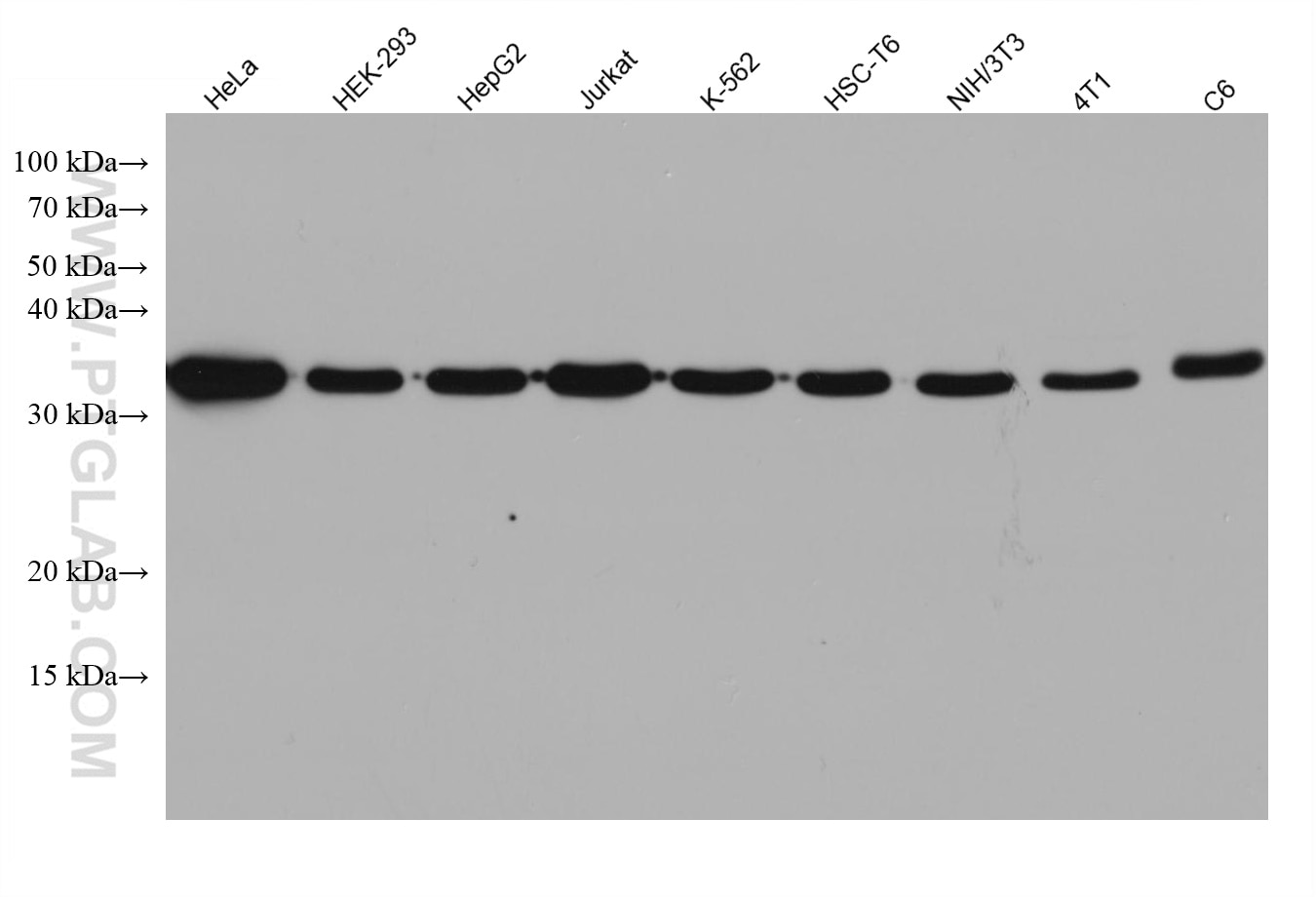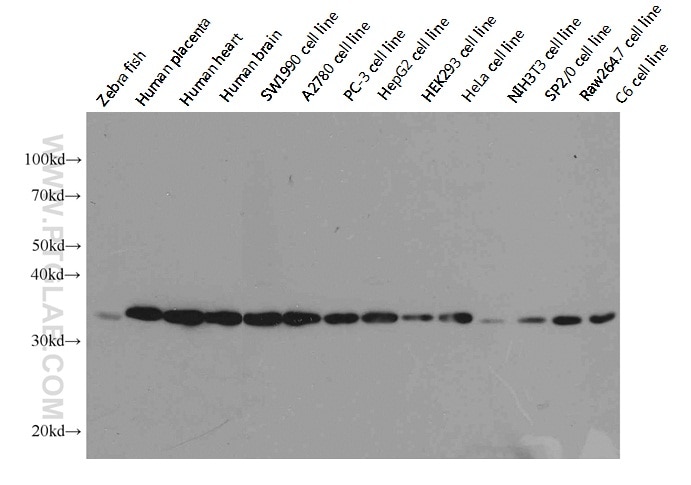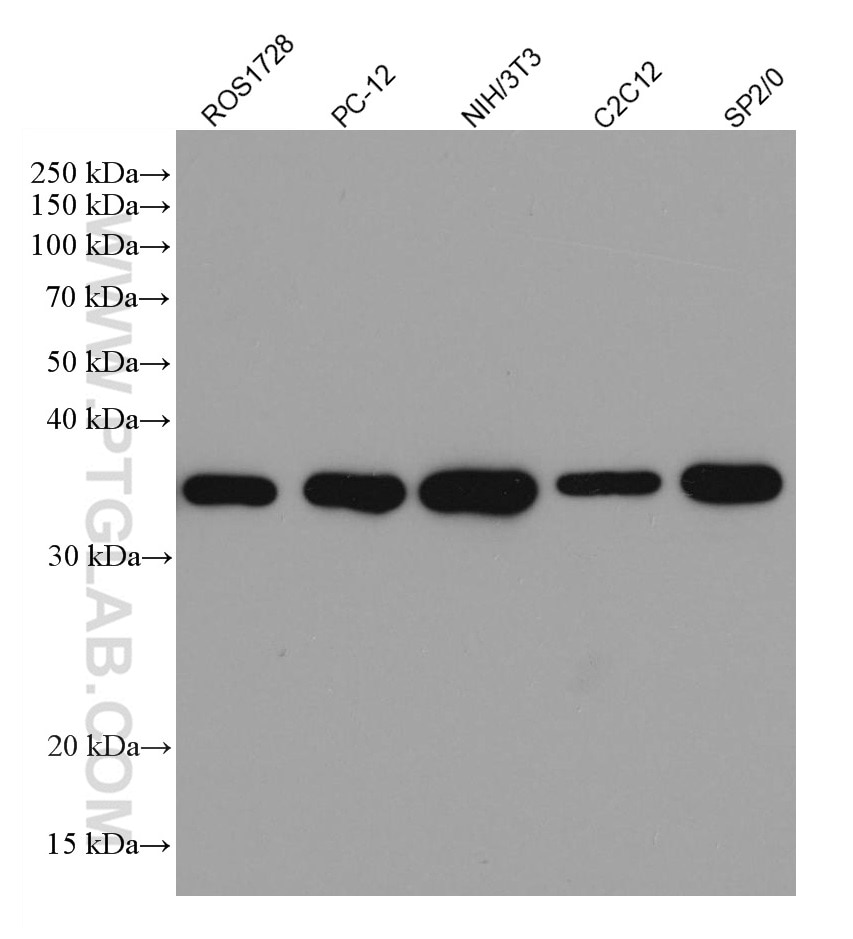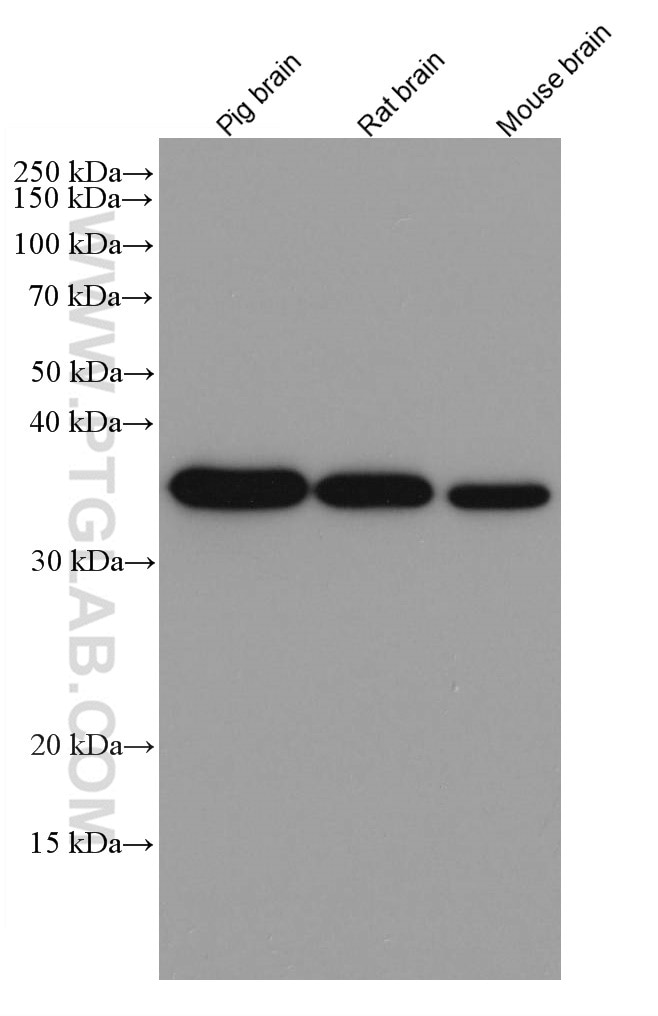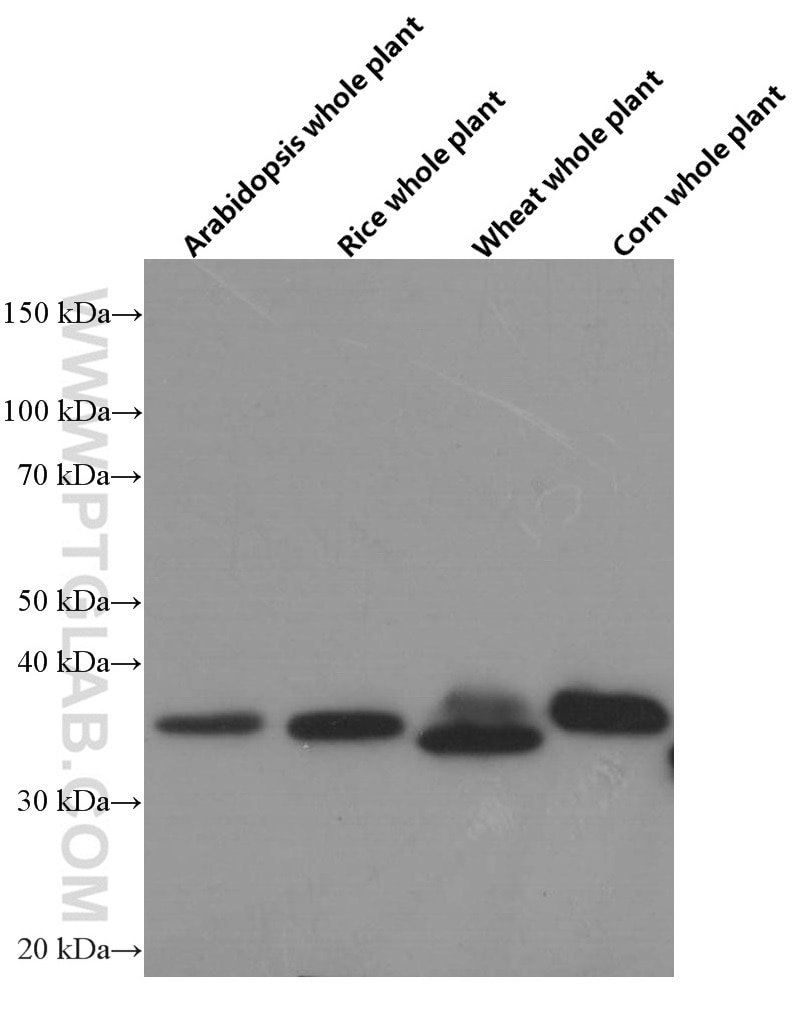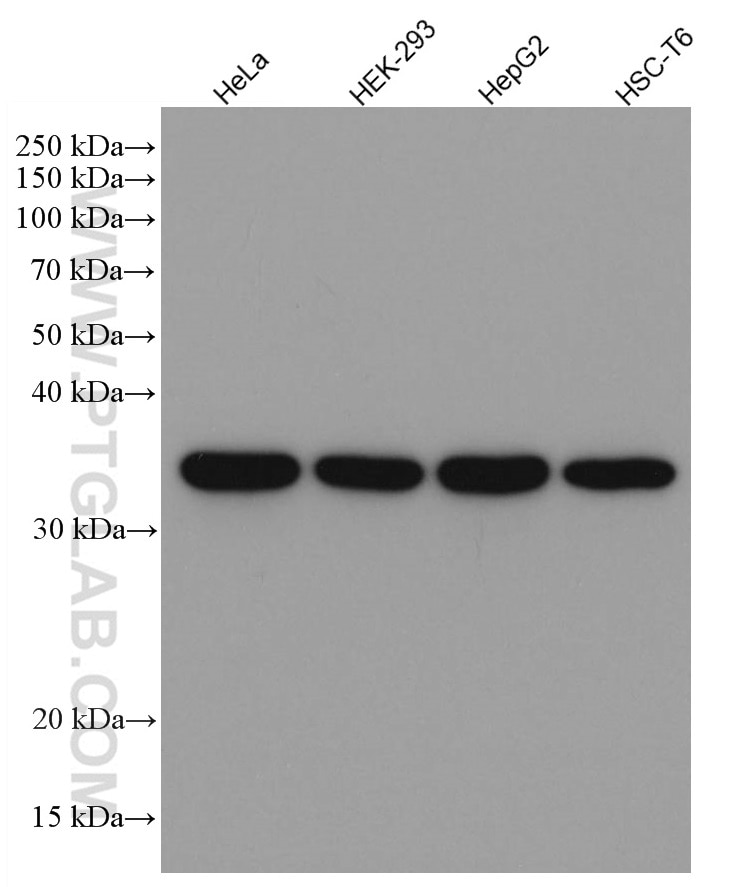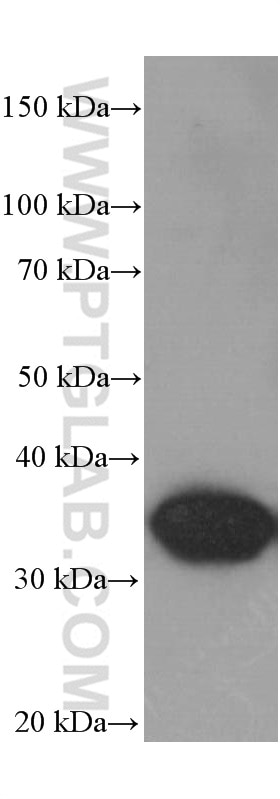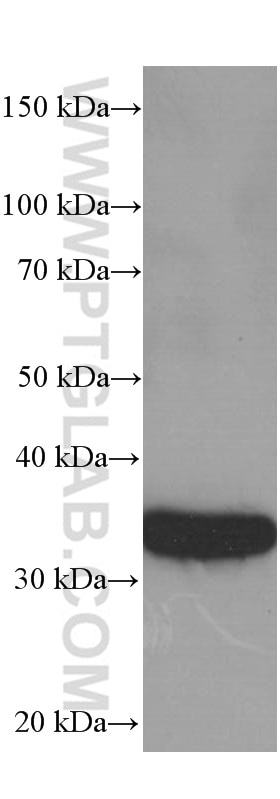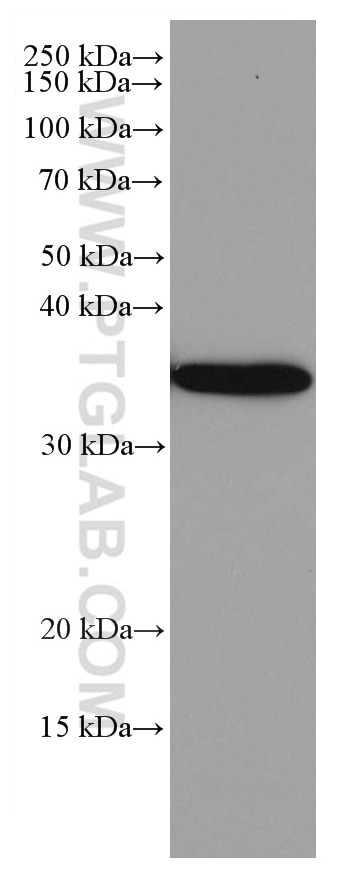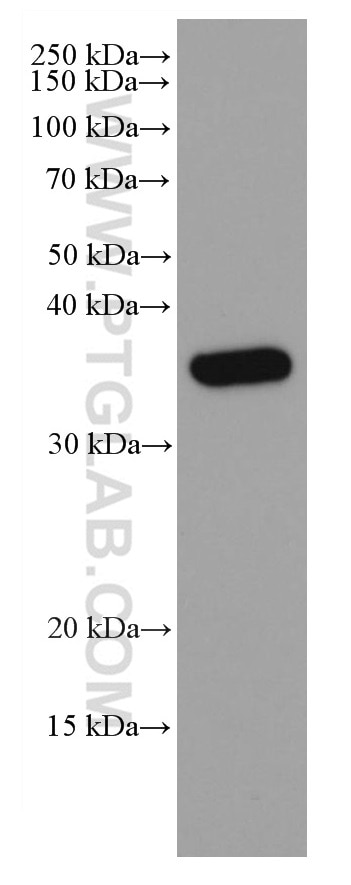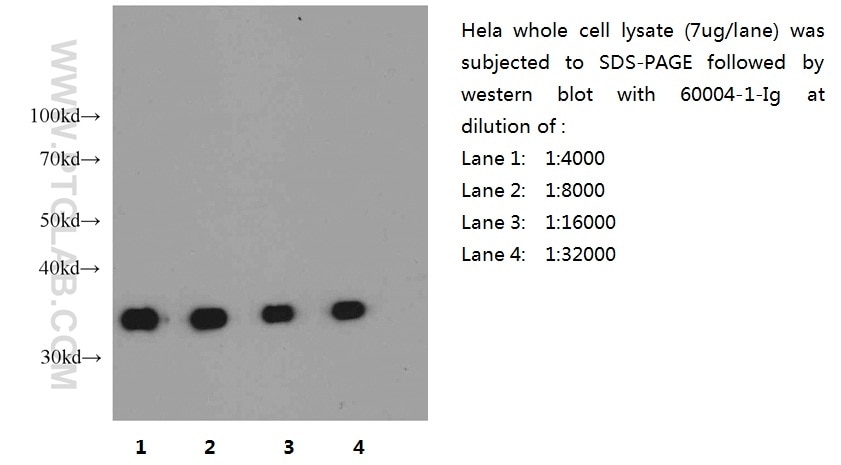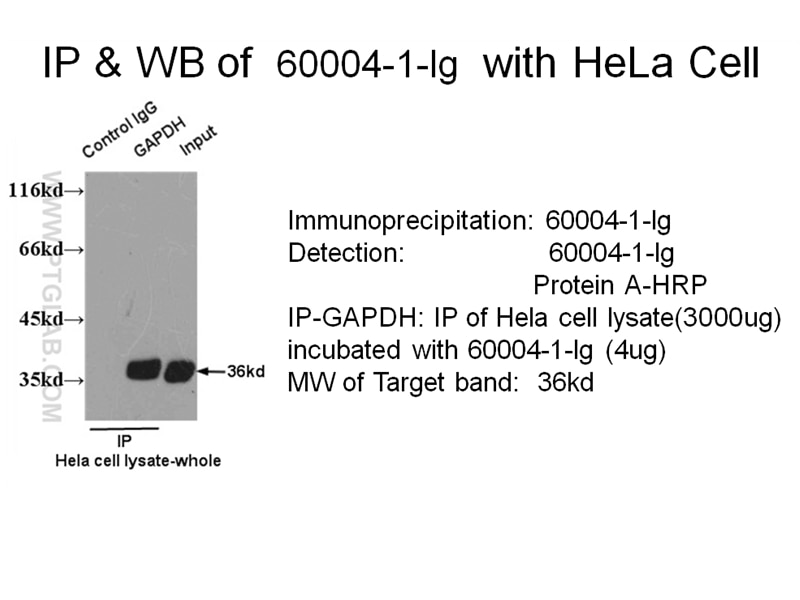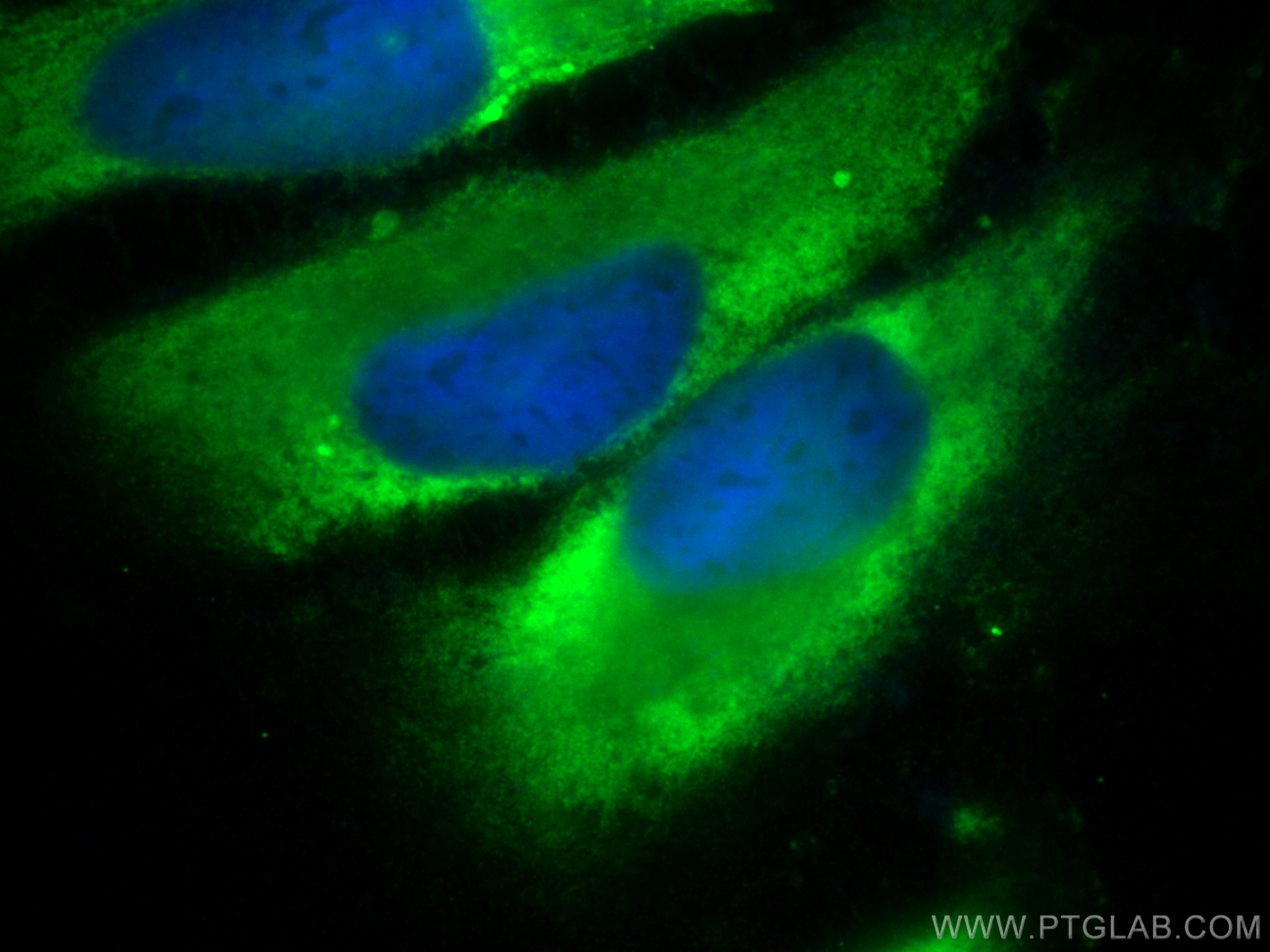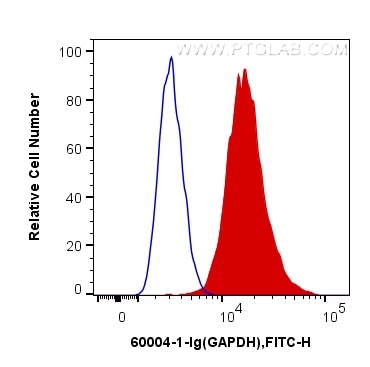- Phare
- Validé par KD/KO
Anticorps Monoclonal anti-GAPDH
GAPDH Monoclonal Antibody for WB, IHC, IF/ICC, FC (Intra), IP, ELISA
Hôte / Isotype
Mouse / IgG2b
Réactivité testée
Humain, levure, poisson-zèbre, porc, rat, souris
Applications
WB, IHC, IF/ICC, FC (Intra), IP, ELISA
Conjugaison
Non conjugué
CloneNo.
1E6D9
N° de cat : 60004-1-PBS
Synonymes
Galerie de données de validation
Applications publiées
| WB | See 1 publications below |
Informations sur le produit
60004-1-PBS cible GAPDH dans les applications de WB, IHC, IF/ICC, FC (Intra), IP, ELISA et montre une réactivité avec des échantillons Humain, levure, poisson-zèbre, porc, rat, souris
| Réactivité | Humain, levure, poisson-zèbre, porc, rat, souris |
| Hôte / Isotype | Mouse / IgG2b |
| Clonalité | Monoclonal |
| Type | Anticorps |
| Immunogène | GAPDH Protéine recombinante Ag0766 |
| Nom complet | glyceraldehyde-3-phosphate dehydrogenase |
| Masse moléculaire calculée | 36 kDa |
| Poids moléculaire observé | 36 kDa |
| Numéro d’acquisition GenBank | BC004109 |
| Symbole du gène | GAPDH |
| Identification du gène (NCBI) | 2597 |
| Conjugaison | Non conjugué |
| Forme | Liquide |
| Méthode de purification | Purification par protéine A |
| Tampon de stockage | PBS only |
| Conditions de stockage | Store at -80°C. 20ul contiennent 0,1% de BSA. |
Informations générales
What is the molecular weight of GAPDH?
The molecular weight of GAPDH is 36 kD.
What is GAPDH?
GAPDH stands for glyceraldehyde-3-phosphate dehydrogenase and is often referred to as a "housekeeping"
protein. It is recognized as an important enzyme involved in metabolic pathways, aiding in the glycolytic
production of ATP and pyruvate (PMID: 21895736).
What is the function of GAPDH?
GAPDH is responsible for catalyzing the phosphorylation of glyceraldehyde-3-phosphate into D-glycerate-1,3-biphosphate. While this function of GAPDH is considered its primary function, GAPDH is also involved, even
critical, in other cell functions, some of which are still being studied. Recent studies have suggested that GAPDH
is a key factor in regulating apoptosis, translocating to the nucleus under certain stressful conditions and acting
as a signaling factor in oxidative stress-induced apoptosis. Other studies indicate that GAPDH plays a role in
transporting vesicles from the endoplasmic reticulum to the Golgi body (PMIDs: 21895736, 12829261, 25859407,
11035021).
Where in the cell is GAPDH localized?
GAPDH is expressed primarily in the cytosolic and membrane regions, with minimal expression in the nucleus
(PMIDs: 21895736, 12829261).
Is there a reason to use an antibody targeting GAPDH if my research is not concerned with glycolysis or nuclear
functions?
Yes! Because GAPDH is often highly expressed throughout different tissues and cell types, GAPDH expression is
useful as a control for Western blots and RT-PCR.
What are the known protein-protein interactions of GAPDH?
GAPDH interacts with other proteins to regulate nuclear translocation and GAPDH catalytic activity. Some of
these proteins include TPPP, SIAH1, CHP1, RILPL1/GOSPEL and FKBP6 (PMIDs: 21895736, 25859407).
Note: For murine tissue samples, conjugated mouse antibody HRP-60004 and rabbit antibody 10494-1-AP are preferable.
